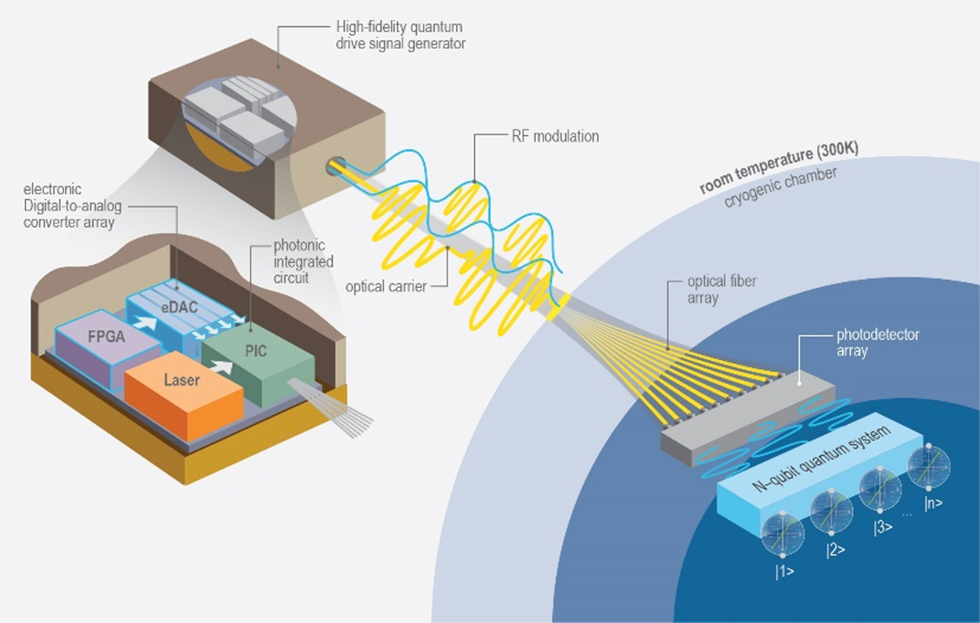Generating microwave signals with high spectral purity and stability is crucial in communication systems, radars, signal processing, radio astronomy, satellites, GPS navigation, spectroscopy, and in time and frequency metrology. Noise and interference are the single most important factors limiting the performance of existing signal processing systems. Systems that implement electronics-based Analogue-to-Digital Converters (ADCs) suffer from multiple noise sources, such as thermal noise and sampling jitter, the latter being particularly important for applications with high signal bandwidth since its effective noise scales linearly with signal. For this reason, ADC performance typically drops with high bandwidth driving up cost dramatically. To mitigate these issues, analog optical links offer a promising technology for applications such as radiofrequency (RF)-over-fiber, antenna remoting, and photonic assisted ADCs featuring reduced noise characteristics and resilience to electromagnetic interference. However, one of the primary limitations of intensity-modulated analog optical link technology is high noise figure stemming from successive electronic-to-optical and optical-to-electronic conversions. Many electro-optic modulation techniques exist that strive for high modulation efficiency by increasing modulation depth of the modulated RF signal resulting higher signal-to-noise ratio. However, fundamental limitations exist for all such technologies, resulting in tradeoffs in RF bandwidth, optical power handling, and/or insertion loss.
LLNL researchers in the NIF Directorate DoD Technologies RF Photonics Group explored phase modulation solutions to this signal processing challenge. Optical frequency combs offer phase noise characteristics that are orders of magnitude lower than available from commercial microwave references. The Photonics Group researchers recognized that by converting the intensity information into phase, the magnitude of the converted information is no longer limited to 100% modulation depth, but instead can span multiple 2π radians without clipping. In a suite of five new patent applications, these researchers proposed several novel innovations including an optical encoder device they refer to as a helix encoder because the mapping of intensity to phase can be viewed as encoding the pump intensity information into a helix, with the third dimension represented by the total number of 2π radian windings. This technology innovation enables digitization of high-power electronic signals via unlimited optical phase wrapping that uses noise cancellation and calibration algorithms to achieve an extremely large dynamic range.
LLNL’s novel systems and methods for synthesizing and processing RF/Microwave signals with high fidelity using photonics has several advantages over all-electronic solutions:
- Wide bandwidth and large dynamic range,
- Ultralow phase noise and jitter,
- Resilience to electromagnetic interference,
- Low jitter.
LLNL’s low noise, wideband, high-fidelity measurement technologies have a wide array of applications in the field of Radio Frequency (RF) / Microwave signal processing:
- Communications
- RF-over-Fiber Antenna Remoting
- RADAR applications
- Satellites
- GPS Navigation
- Quantum Computing
- Radio Astronomy
Lawrence Livermore National Laboratory 2020 Technology Transfer Report, page 10-11 (https://ipo.llnl.gov/sites/default/files/2021-04/TechTransfer_2020_Report_Final.pdf)
Current stage of technology development: TRL 5-6 (March 2023)
LLNL has filed for patent protection on this invention.


